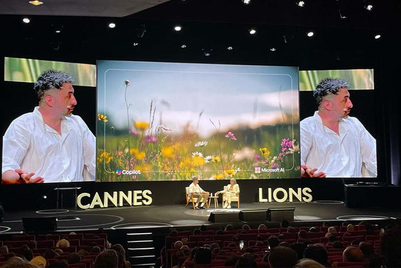
AI, IoT, and cloud computing have unlocked transformative potential for businesses. But for every opportunity these technologies offer, there are equally significant risks lurking in the background. While companies race to leverage AI, they often overlook hidden dangers that are elusive but damaging.
It is time for a shift in mindset—one that does not just react to risks after they happen but actively anticipates and manages them before they become real threats.
The AI advertising misfire
Consider this scenario: a media company invests heavily in AI to personalise its advertising campaigns. The company envisions better engagement, improved targeting, and, ultimately, increased revenue. But within months, something unexpected happens: their advertisements begin to misfire, reach the wrong audiences, and violate data privacy laws that the company had not fully understood.
At first glance, the issue seems straightforward—poor algorithm performance or a glitch in the system. However, as the investigation unfolds, it becomes clear that AI's integration into the company’s advertising strategy introduced unforeseen risks: a lack of transparency in how the AI was making decisions, biases in data leading to ethical concerns, and regulatory gaps that left the business exposed to potential legal actions. The company failed to anticipate the consequences of its technology convergence.
While hypothetical, this is very much a real-world possibility highlighting the potential hidden risks of AI. The complexity of AI can blindside businesses, especially when the focus is primarily on immediate outcomes. But as technology becomes more interconnected, the line between opportunity and vulnerability blurs, and the threats multiply in ways that traditional risk management strategies cannot manage.
Why being reactive doesn’t work anymore
For decades, many business sectors have operated under a reactive risk management model—responding to cyberattacks, data breaches, or system failures as they occurred. This approach worked well when the systems were isolated, and the risks were easier to predict. But in today’s world of interconnected systems, it is no longer enough.
Take the hypothetical case of a cybersecurity breach at a major retail company. Initially, it appeared to be a simple hack targeting a single store’s inventory system. But as the investigation unfolds, it is revealed that the hack has gained access to the entire supply chain system, compromising sensitive customer data and halting operations worldwide. The damage? Incredibly costly, both financially and reputationally.
AI, IoT, and cloud computing are creating a perfect storm for businesses, where risks cascade across networks in ways we cannot always foresee. Companies are no longer dealing with a single point of failure but a complex web of interdependent systems. And the unfortunate reality is that many businesses are still relying on outdated, reactive strategies to handle new world complexity.
In the advertising industry, AI promises a revolution in personalisation and effectiveness. But as companies rush to implement AI-driven solutions, they could inadvertently invite risks that threaten both their operations and their reputation. For instance, if not properly trained or monitored, AI-powered advertising tools can unintentionally reinforce biases, targeting marginalised groups with inappropriate or harmful ads.
Let us look at another hypothetical possibility. An ad agency’s AI model, trained on historical data, inadvertently perpetuates gender stereotypes in ad targeting. The algorithm only shows advertisements to one gender. While certain demographic groups are targeted the campaign reinforces outdated gender norms. The backlash is swift, and the company is left scrambling to retool its algorithms and regain public trust.
These hypothetical scenarios highlight a critical point: the more we rely on AI, the more we need to ensure ethical, transparent security protocols. The reality is that many businesses across a variety of sectors, including media and marketing, still fail to address these issues head-on, either overlooking the risks or assuming the technology will fix itself.
Embracing a proactive mindset
To truly thrive in a world of AI-driven opportunities and risks, businesses must shift to a proactive risk management approach. This shift is not just about preventing the obvious risks—it is about building a resilient system that anticipates unforeseen challenges.
It requires implementing a robust AI ethics and risk management framework that includes predictive analytics, scenario planning, and stress tests on AI models. For example, Microsoft has established an internal AI ethics board, which reviews AI deployment across the company, ensuring it aligns with ethical principles and mitigates risks such as algorithmic bias, privacy concerns, and security vulnerabilities. In addition, scenario planning helps understand how emerging trends in AI might introduce new risks, such as data breaches or the unintended consequences of AI-driven decisions. This proactive approach helps the company avoid potential issues before they can cause harm while fostering a culture of accountability and transparency.
Navigating the future of AI risk
The risks of AI are real for businesses in the media and advertising industries, but so are the opportunities. Moving forward, companies must adopt a forward-thinking approach that combines predictive tools, scenario planning, and agile risk frameworks. AI may offer immense potential, but it is up to businesses to ensure they are not blindsided by its hidden risks.
As the AI arms race continues, companies must ask themselves: Are we simply reacting to the risks we can see, or are we preparing for the ones we cannot? The difference could mean the success or failure of your business in an increasingly complex, technology-driven world.
Geoff Clarke is chief operating officer at Mediabrands Australia.



.jpg&h=334&w=500&q=100&v=20250320&c=1)



.png&h=334&w=500&q=100&v=20250320&c=1)
.png&h=334&w=500&q=100&v=20250320&c=1)
.png&h=334&w=500&q=100&v=20250320&c=1)

.png&h=334&w=500&q=100&v=20250320&c=1)


.jpg&h=268&w=401&q=100&v=20250320&c=1)
.png&h=268&w=401&q=100&v=20250320&c=1)


.png&h=268&w=401&q=100&v=20250320&c=1)

